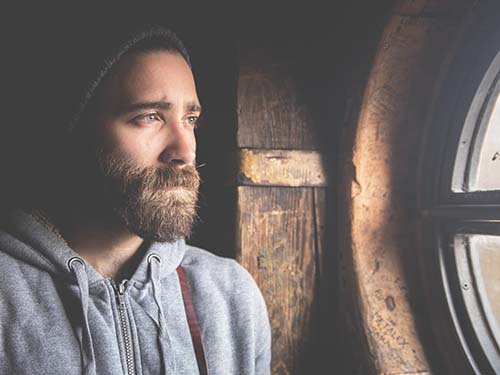
(Posted 2021 November)
Take a moment, close your eyes, and picture an image of a victim of interpersonal violence (IPV). What image came to mind? Since we know interpersonal violence is prevalent, for many of you, an image of a loved one is what you saw.
Now, close your eyes again and picture a victim that you don’t know. Who did you see? Did you see a victim that identified as gay, lesbian, bisexual, transgendered, or queer (GLBTQ)? Did you see someone with a disability? An older adult? A man?
Though images of victims of interpersonal violence often depict women, men are also victims of domestic violence. Far too frequently, we see representations of men as the sole perpetrators of interpersonal and sexual violence. According to the Centers for Disease Control and Prevention (CDC), approximately 1 in 10 men report some form of IPV-related impact. 1 But skewed representation of images and associated stereotypes leads to biases against men and inequities in the availability and distribution of resources for them.
Universal social norms such as “Man Rules” further perpetuate these stereotypes. As defined by Dan Griffin, Man Rules are unwritten rules on how to be a man (DanGriffin.com The_Man_Rules_Excerpt.pdf). Some of the most common Man Rules are:
- Don’t cry.
- Don’t be weak.
- Don’t show emotion, other than anger.
- Don’t ask for help.
 These misconceptions, stereotypes, and beliefs in Man Rules form our opinions about men and how they should behave, which then impacts how we interact with and treat them. For example, if we internalize the belief that men are not supposed to be weak, this may inadvertently impact how we engage male victims seeking support through the Domestic and Sexual Violence 24-Hour Hotline. Or, if we internalize the belief that all or most men are violent, we may not provide equitable, comprehensive services to a male victim to whom we’re providing court accompaniment.
These misconceptions, stereotypes, and beliefs in Man Rules form our opinions about men and how they should behave, which then impacts how we interact with and treat them. For example, if we internalize the belief that men are not supposed to be weak, this may inadvertently impact how we engage male victims seeking support through the Domestic and Sexual Violence 24-Hour Hotline. Or, if we internalize the belief that all or most men are violent, we may not provide equitable, comprehensive services to a male victim to whom we’re providing court accompaniment.
Dan Griffith challenges people to engage in the following exercise to help examine critically their perceptions about men:
- Think of a man you have worked with in the past year [through your work with DSVS]: Based upon what you have heard today, what would you have done differently to support him?
- If you could make one change in how you relate to men what would it be?
- In your current role [with DSVS], what is one action you can commit to take to support equity in service delivery to men?
The DSVS Equity Impact Team encourages everyone to engage in the exercise above. Only when we become aware of our biases toward men can we begin to address them consciously, engage more healthily with men, and provide stronger quality service delivery and support for this population. Author Brené Brown reminds us that “the expectations that bring us to our knees are so organized by gender.”
Now, close your eyes again and picture a victim of interpersonal violence.
This article is by the Domestic and Sexual Violence Services Equity Impact Team.
1 Intimate Partner Violence, Sexual Violence, and Stalking Among Men, CDC
This article posting is part of the Domestic and Sexual Violence Services' Volunteer Voices monthly newsletter for current and potential volunteers. If you're not already a volunteer, learn how to get involved. Find out about upcoming trainings, volunteer trainings, happenings around the DSVS office and information about articles, books, media recommendations and more.
Learn more about the Domestic and Sexual Violence Services (DSVS).

